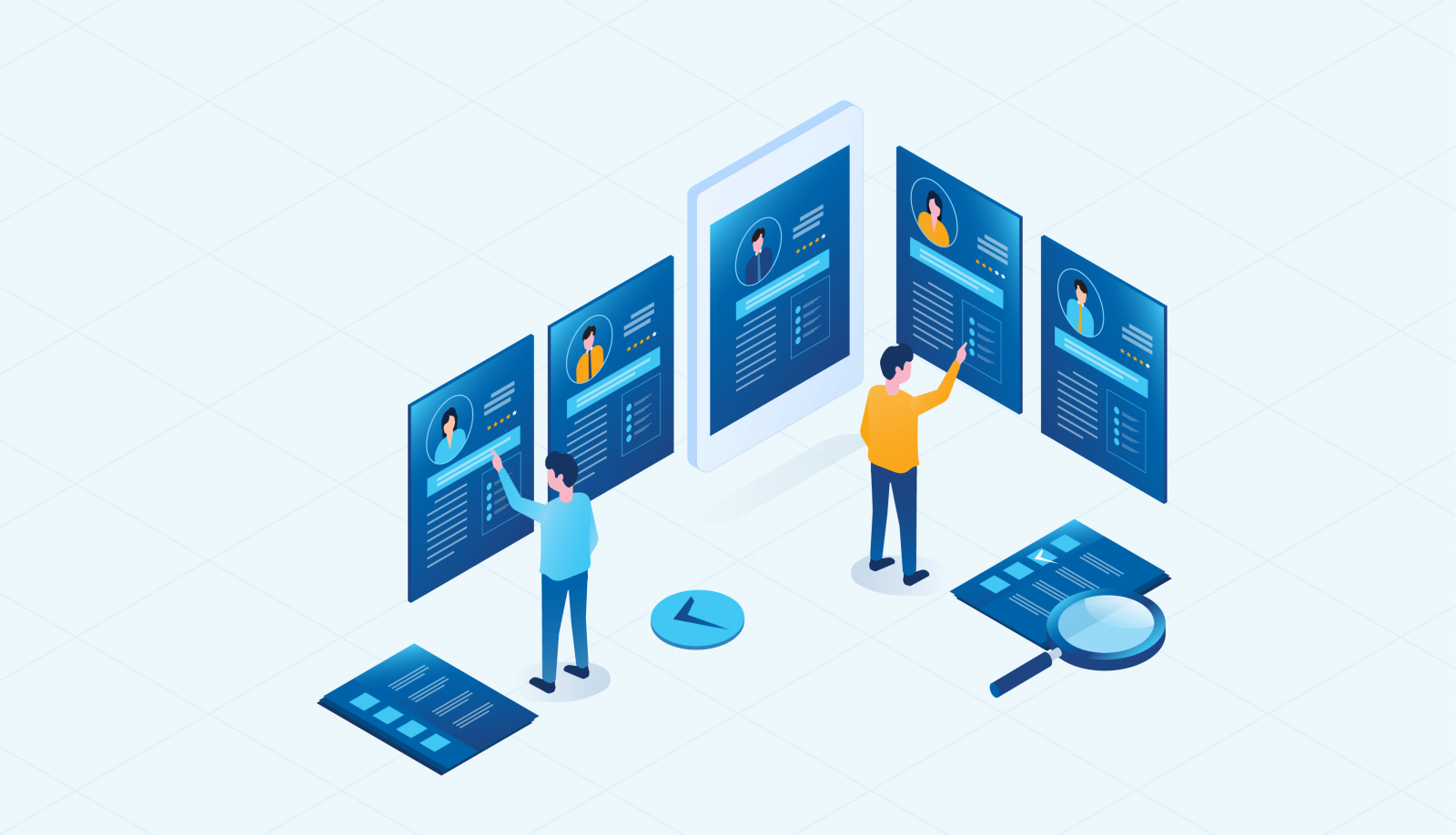1. What is HR information system?
Human resource information system - or HRIS (Human resource information system) is a software solution that supports the organization and scientific management of detailed information about employees as well as related policies and procedures, regarding the personnel in the organization.
The data collected and stored on the system includes information on personnel records, contracts, salary - welfare policies, reward - discipline mechanisms, working process,... These data will be collected and stored on the system are synthesized, analyzed and regularly monitored to serve as the basis for decision-making and to propose important strategies related to human resources.
The HR information management system was developed for the purpose of standardizing human resource management operations and processes in the enterprise, thereby helping managers exploit and effectively use human resources to serve the needs of employees for the operation of the organization.
2. Role of Human Resource Management Information System
Accurately reflect the human potential of the organization
People are the core factor that determines the competitiveness and development of enterprises. The human resources team is responsible for two important pillars in the organization's operating system: providing the physical strength to directly perform specialized tasks that cannot be automated (customer care, troubleshooting, etc.) while devoting their brains to bring value to the company (coordinating resources, allocating resources, formulating and implementing plans,...).
Therefore, in order to optimize human resources, administrators need to use information management systems to accurately recognize and evaluate the potential and values that these resources can bring.
The human resource information system is the tool that reflects the most complete and comprehensive potential of the human resources team in the organization in terms of both quantity and quality and is placed in an overview from the past and present until the future.
HRIS provides data on personnel changes, labor quality, and development potential so that the leadership has a basis to adjust its goals and operational orientations in accordance with the personnel structure according to the needs of the company different periods, stages and parts.
The basis for human resource development strategies
The human resource management information system is an important link in the organization's operating system because it provides data for the decision-making process and proposes effective resource development strategies.
Through monitoring and analyzing HR data, administrators can make important decisions related to human resource structure such as cutting, hiring new or keeping the same number.
In addition, HRIS is the basis for the leadership to develop staff development strategies such as training, fostering, etc., as well as orienting goals and operating plans in accordance with the company's human potential organization.
Two-way communication channel between management and employees
The human resource information system also acts as a bridge between the leadership and all employees, by allowing two-way transmission and reception of information between management and personnel.
Managers can receive all comments and complaints from employees to improve management quality, and employees can also actively monitor their own information on the system. As a result, the human resource management process is always transparent, clear and has a seamless, 2-way interaction between all levels. This is a solid foundation to build a strong, cohesive organization.

3. 8 important functions of the Human Resource Information System
Manage the recruitment process
The human resource information system supports comprehensive management of the closed and centralized recruitment process on one platform. The system allows employers to track candidate profile information, schedule interviews, evaluate candidates visually and arrange job opportunities in accordance with each person's ability and experience.
Pay
HRIS helps automate the employee payroll process. Contract data and personnel information are pushed directly to the system, combined with attendance data to automatically generate payroll at the end of the month. In addition, some systems allow direct salary payments to employees right on the software.
Welfare management
Another function of HRIS is to manage employee benefits and compensation policies. Advanced systems provide a personalized model of employee welfare. With this human resource management model, employees can choose the benefits they are entitled to in accordance with their own needs and desires instead of issuing a common remuneration policy for the entire company. This flexible benefit system is considered a new trend in the HR industry, helping to increase the effectiveness of talent retention and make employees ready to stick with the organization for a long time.
Timekeeping
This module has the function of collecting data about the employee's work schedule and attendance. Working day data is the basis for the HR department to calculate and build monthly payroll for employees.
Today, information management systems allow companies to time attendance in many forms such as GPS on Mobile App based on the location that has been located and timed, or connecting AI Camera, magnetic card, etc. Time attendance data will be pushed directly to the system in real time, creating the time when employees make timekeeping, so that managers can easily control the working time of employees, know who is late – come back soon,…
Training and developing
Human resource training and development is one of the core functions of human resource management. This module allows HR to monitor and evaluate the qualifications and skills of employees, thereby deploying appropriate training and retraining courses to improve the quality of the human resources team.
The training function allows users to design online training courses, store lectures and training plans, and support verification and evaluation of outputs for personnel after the training course is over.
Performance Management
The performance management function of the human resource information system helps administrators evaluate human resource performance accurately and scientifically through a system of KPI criteria, competency frameworks, etc., thereby recording a fair way the efforts and dedication of employees, as well as know which employees are underperforming to take appropriate quality improvement methods.
Reporting and Analysis
The human resource information management system provides administrators and the Board of Directors with comprehensive and detailed dynamic reports on the situation and efficiency of human resource use in the organization on many different aspects such as revenue of employees, absenteeism frequency, work performance, etc. From there, it serves as a basis for managers to make more informed decisions, in line with the current human resource situation of the enterprise.
The solution needs to be able to connect the HR module with finance
Labor is one of the factors that greatly affects an organization's budget. Any decision involving people has financial implications. It is necessary for the company to have a complete vision of both its people and its financial factors and to recognize the relationship between these two factors. The best HR information systems are software that are closely linked to the financial function. Ideally, that system would be on the same platform and use the same technology as the company's financial system.












Replies to This Discussion